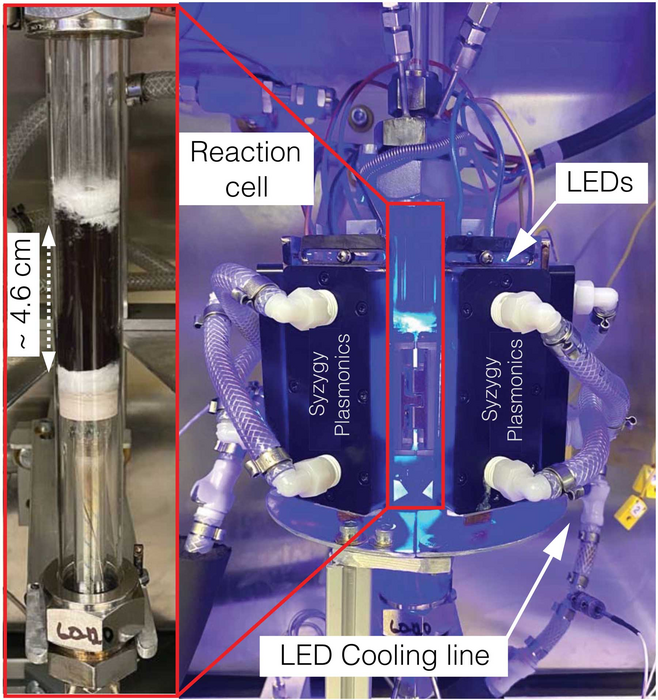Researchers from Princeton University and Rice University combined iron, copper and ordinary
Industrial plants often break down ammoniaat high temperatures, using as catalysts a wide range of catalysts, that is, materials that speed up a chemical reaction. Previous research has shown that the process temperature can be lowered with ruthenium, but this material is too expensive.
To optimize the process, chemists usedadvances in plasmonics. This is a relatively new field that explores the combination of tiny metallic nanostructures and light. By aiming light at structures smaller than one wavelength, engineers manipulate material properties. In this case, the scientists used light to excite electrons in iron nanoparticles.
 Reaction cell (left) and photocatalyticplatform (right) used in testing copper-iron plasmonic photocatalysts for the production of hydrogen from ammonia. All the reaction energy for catalysis came from LEDs emitting light at a wavelength of 470 nanometers. Image: Syzygy Plasmonics, Inc., Rice University
Reaction cell (left) and photocatalyticplatform (right) used in testing copper-iron plasmonic photocatalysts for the production of hydrogen from ammonia. All the reaction energy for catalysis came from LEDs emitting light at a wavelength of 470 nanometers. Image: Syzygy Plasmonics, Inc., Rice University
Only suitable for plasmonicscertain types of metals, such as copper, gold, or silver. Scientists added copper atoms to iron particles to create tiny nanostructures. In this case, copper acts as an antenna that captures light from the LED. And the iron atoms embedded in the copper act as catalysts to speed up the reaction, driven by the electrons excited by the light.
In a series of experiments, scientists have shown that thisthe method is suitable for obtaining hydrogen from ammonia. At the same time, only light from energy-saving LEDs is required for operation, operating at room temperature without additional heating. The researchers say the process is scalable. Scientists will continue to explore alternative catalysts to further improve the efficiency of the process and reduce its cost.
Read more:
Cows were fed hemp and checked what happened to their milk
Named the main danger of the lunar mission "Artemis"
Created a navigation system that is more accurate than GPS